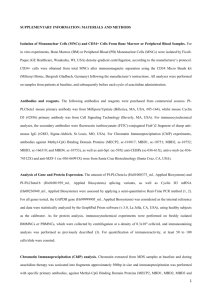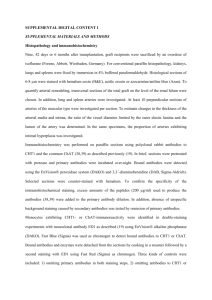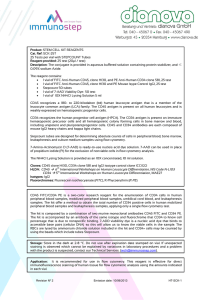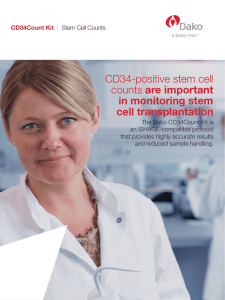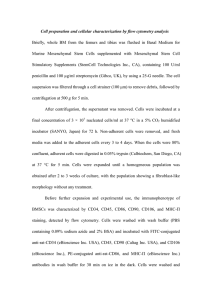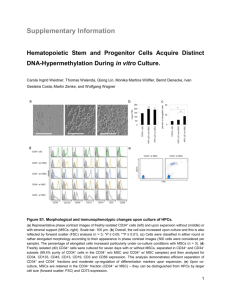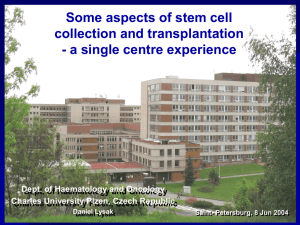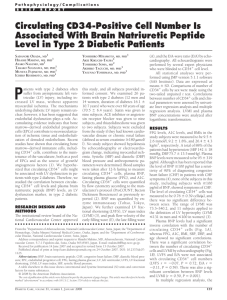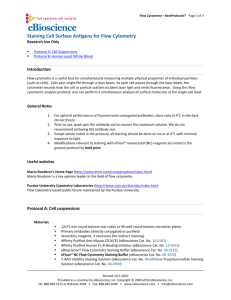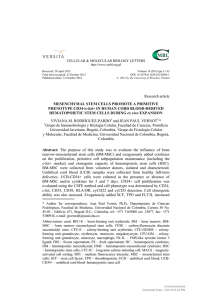cddis2013389x1
advertisement
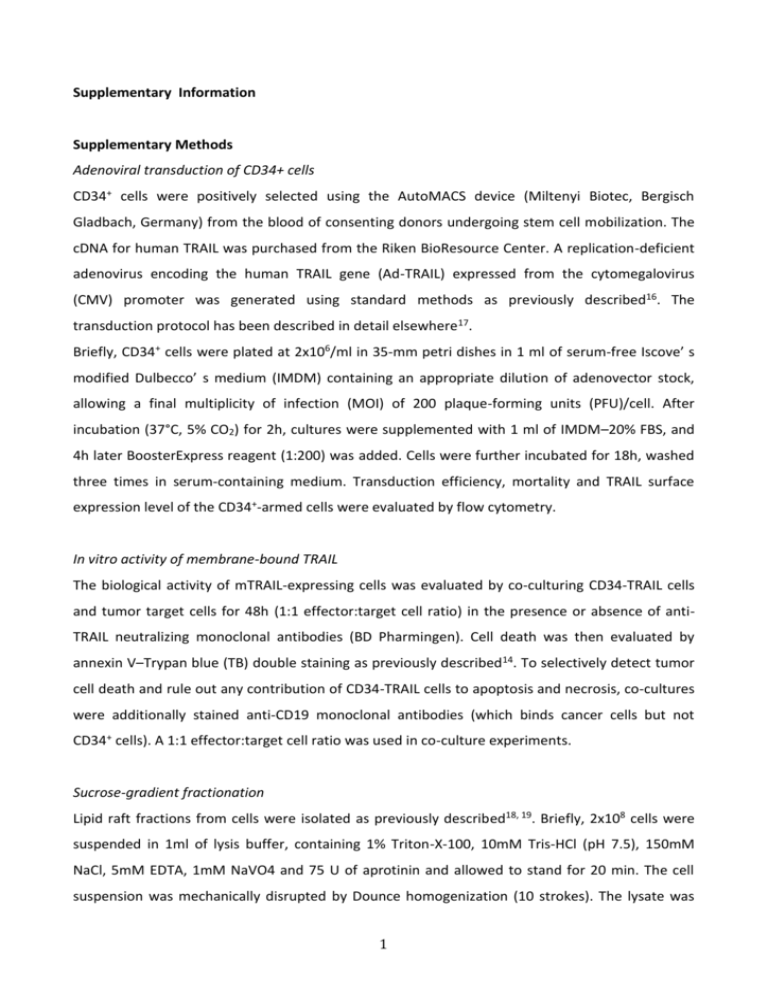
Supplementary Information Supplementary Methods Adenoviral transduction of CD34+ cells CD34+ cells were positively selected using the AutoMACS device (Miltenyi Biotec, Bergisch Gladbach, Germany) from the blood of consenting donors undergoing stem cell mobilization. The cDNA for human TRAIL was purchased from the Riken BioResource Center. A replication-deficient adenovirus encoding the human TRAIL gene (Ad-TRAIL) expressed from the cytomegalovirus (CMV) promoter was generated using standard methods as previously described16. The transduction protocol has been described in detail elsewhere17. Briefly, CD34+ cells were plated at 2x106/ml in 35-mm petri dishes in 1 ml of serum-free Iscove’ s modified Dulbecco’ s medium (IMDM) containing an appropriate dilution of adenovector stock, allowing a final multiplicity of infection (MOI) of 200 plaque-forming units (PFU)/cell. After incubation (37°C, 5% CO2) for 2h, cultures were supplemented with 1 ml of IMDM–20% FBS, and 4h later BoosterExpress reagent (1:200) was added. Cells were further incubated for 18h, washed three times in serum-containing medium. Transduction efficiency, mortality and TRAIL surface expression level of the CD34+-armed cells were evaluated by flow cytometry. In vitro activity of membrane-bound TRAIL The biological activity of mTRAIL-expressing cells was evaluated by co-culturing CD34-TRAIL cells and tumor target cells for 48h (1:1 effector:target cell ratio) in the presence or absence of antiTRAIL neutralizing monoclonal antibodies (BD Pharmingen). Cell death was then evaluated by annexin V–Trypan blue (TB) double staining as previously described14. To selectively detect tumor cell death and rule out any contribution of CD34-TRAIL cells to apoptosis and necrosis, co-cultures were additionally stained anti-CD19 monoclonal antibodies (which binds cancer cells but not CD34+ cells). A 1:1 effector:target cell ratio was used in co-culture experiments. Sucrose-gradient fractionation Lipid raft fractions from cells were isolated as previously described18, 19. Briefly, 2x108 cells were suspended in 1ml of lysis buffer, containing 1% Triton-X-100, 10mM Tris-HCl (pH 7.5), 150mM NaCl, 5mM EDTA, 1mM NaVO4 and 75 U of aprotinin and allowed to stand for 20 min. The cell suspension was mechanically disrupted by Dounce homogenization (10 strokes). The lysate was 1 centrifuged for 5 min at 1300xg to remove nuclei and large cellular debris. The supernatant fraction (post-nuclear fraction) was subjected to sucrose density gradient centrifugation, i.e. the fraction was mixed with an equal volume of 85% sucrose (w/v) in lysis buffer (10mM Tris-HCl, pH 7.5, 150mM NaCl, 5mM EDTA). The resulting diluent was placed at the bottom of a linear sucrose gradient (5–30%) in the same buffer and centrifuged at 200,000xg for 16–18 h at 4°C in a SW41 rotor (Beckman Inst., Palo Alto, CA, USA). After centrifugation, the gradient was fractionated, and 11 fractions were collected starting from the top of the tube. All steps were carried out at 0–4°C. Fluorescence resonance energy transfer (FRET) by flow cytometry We applied FRET analysis by flow cytometry in order to study the molecular association of GM3 and DR4 or DR5. Briefly, cells were fixed 0.1% paraformaldehyde, washed twice in cold PBS, and then labeled with antibodies tagged with donor (PE) or acceptor (Cy5) dyes. GM3 staining was performed by using unlabeled mouse antibody (Seikagaku Corp., Tokyo, Japan) and a saturating amount of biotinylated anti-mouse IgM (Sigma) followed by Streptavidin-Cy5 (Amersham Buckinghamshire, UK). DR4 and DR5 staining was performed by using specific polyclonal antibodies (R&D Systems) and saturating amount of PE-labeled anti-goat (BD Pharmingen, Franklin Lakes, NJ). In addition, lymphocytes freshly isolated from healthy donors or subjects with hematological malignancies were stained with anti-CD19 FITC-conjugated monoclonal antibodies (BD Pharmingen) and analyses were restricted to CD19-positive cells only. After staining, the cells were washed twice, resuspended in PBS, and analyzed with a dual-laser FACScalibur flow cytometer (BD Biosciences, Heidelberg, Germany) as previously described20. For determination of FRET efficiency, changes in fluorescence intensities of donor- plus acceptorlabeled cells were compared to the emission signal from cells labeled with donor-only and acceptor-only fluorophores. As a further control, the cross-reactivity among all the different primary and secondary antibodies was also assessed. All data were corrected for background by subtracting the binding of the isotype controls. Efficient energy transfer resulted in an increased acceptor emission on cells stained with both donor and acceptor dyes. The FRET efficiency (FE) was calculated according to Riemann21 using the formula: FE = (FL3DA − FL2DA/a − FL4DA/b)/FL3DA, where A is the acceptor and D is donor, a = FL2D/FL3D and b = FL4A/FL3A. For an exemplification of FE computation see Supplementary File 1 (DR4/GM3) and Supplementary File 2 (DR5/GM3). 2
